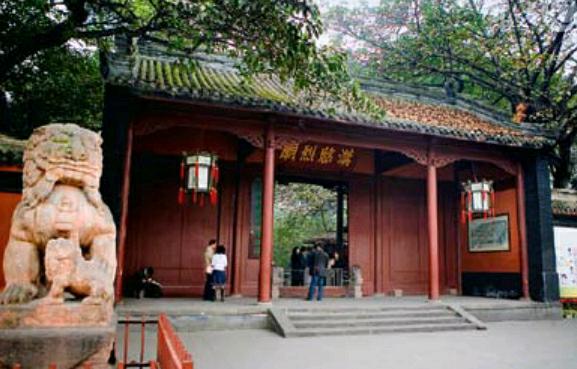CHENGDU, CUDDLE AND SPICES
2015-12-11byCecileZehnacker
by+Cecile+Zehnacker
Chengdu, the capital of Sichuan Province, is mainly known for its delicious spicy food and for being the hometown of giant pandas. This city of South China differs dramatically from the northern cities due to its climate and way of life, considered more laid back. Most people travel to Chengdu to see the giant pandas, but the city actually has many other attractions to offer to visitors, starting from its historical areas, where it is possible to discover some traditional arts from China as well as delicious local snacks.
Jinli Street is probably the most famous place for this. This animated street is much appreciated by both locals and visitors who flock here, especially in the evening. Although Jinli Street is today a very nice tourist destination, it actually has a long history. During the Three Kingdoms Period (220-280), it was a busy commercial hub, known as the “First Street of the Shu Kingdom,” and during the Qing Dynasty(1644-1911), it was renowned for its rich cloth trade. The ancient city of Chengdu was part of the Shu Kingdom which was one of the Three Kingdoms, along with the Wu and Wei kingdoms. All three kingdoms fought to conquer each others territories. Nowadays, it is a very nice walking area with beautiful, traditional architecture and numerous shops and food stalls. Here, it is possible to taste many local snacks. Another interesting walking area is the Wide and Narrow Alleys (Kuanzhai Xiangzi). It consists of three alleys — the Narrow Alley, the Wide Alley and the Jing Alley – amidst about 45 courtyards. They were built in the architectural styles of the Ming (1368-1644) and Qing dynasties, and each of them represents a specific facet of Chengdus life. The Wide Alley represents Chengdus leisure and folk life, the Narrow Alley is about slow life and peacefulness, while the Jing Alley is about modern life. Together they form an appealing area to visit and discover Chengdus traditions and snacks, along with some modern hotels and fancy boutiques.
Just outside Jinli area stands the picturesque Wuhou Temple, also known as Martial Marquis Memorial Temple. Originally built in 221 as a place to keep the remains of Shu Emperor Liu Bei, it is also dedicated to Zhuge Liang, who was minister and advisor to Emperor Liu Bei. After being burnt down during the Ming Dynasty, it was rebuilt in 1627 under the Qing Dynasty. Its evocative architecture surrounded by vegetation includes many sculptures of important figures of the Shu Kingdom and stirs a kind of old-world feeling that made me feel like I was instantly transported to Chinese times of yore.

Chengdu is home to other captivating temples: the Bronze Goat Taoist Temple, which is one of the most famous Tao- ist temples in China, and the Baoguang Temple, a Buddhist temple where, it is said, monks found 13 Buddhist relics.
Of course, Chengdus most famous attraction is its emblematic animal: the giant panda. Two places are home to pandas in Chengdu. One is the Research Base for Giant Panda, which was established to offer pandas a simulated natural habitat that could be conducive to breeding. It hosts many pandas of all ages and has a nursery where newborns are handled and reared with great care. The center also hosts other animals, such as the small red panda and birds, surrounded by beautiful bamboo alleys. Chinas largest giant panda nursery, Bifengxia Giant Panda Base, is located around 150 kilometers away from Chengdu. Here, usually over 80 pandas live freely in the middle of a dense forest and waterfalls, scenery that visitors find strikingly beautiful.
Another pride of Chengdu and Sichuan Province in general is its food. Sichuanese food is one of the most appreciated in China and, perhaps, also the spiciest with liberal use of garlic, chili and the famous Sichuan pepper with its distinct flavor. This enticing cuisine has even been awarded by UNESCO when Chengdu was named a “City of Gastronomy” in 2011. The most famous dish of all is the hotpot, and there are many thriving hotpot restaurants in Chengdu. Hotpot consists of boiling soup in which guests cook their own food, except that Sichuan hotpots soup is full of red peppers. However, the heavy use of pepper, which may appear somewhat excessive, is linked to traditional Chinese medicine. In Sichuan, which is very humid and can get quite cold as well, traditional wisdom is that pepper helps people expel the damp and the cold from the body. Often, people who move to Chengdu are advised to start eating spicy food in order to help their body adapt to its climate. However, on a first visit to Chengdu, caution is advised when trying some dishes with the locals, who dont even seem to notice the pepper. Also, you might feel that your mouth is on fire.